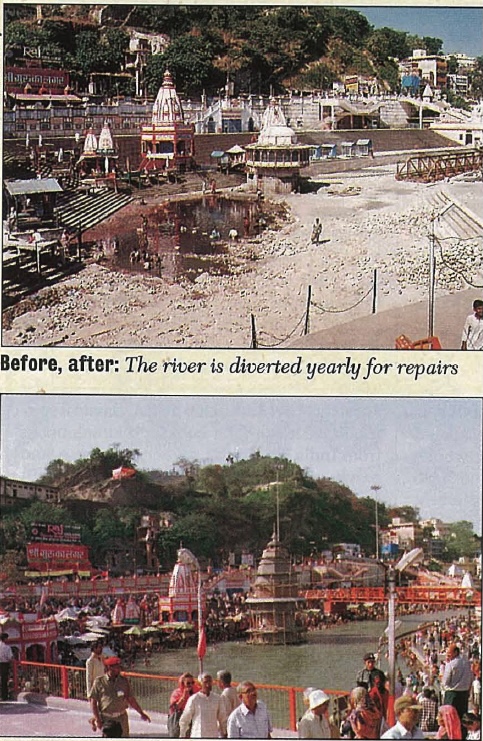By PRABHA PRABHAKAR BHARDWAJ
Senior Indian administration service official J.P. Sharma smiled contentedly as he detailed to Hinduism Today the massive preparations undertaken prior to the Kumbha Mela. As Mela Chief Officer, you could tell he was in control, especially with US$25 million from the Uttar Pradesh state government and 25,000 policemen under his command. “We’ve considered all angles, with 23 government departments joining to make this Mela comfortable, safe and memorable for all,” said Sharma. He accomplished it, and here’s how.
The Mela area covered 130 square kilometers, divided into 31 sectors. Each sector had a magistrate, one senior police officer, medical doctor, representatives of electricity and water departments and basic pilgrim facilities. Haridwar is small and congested, relative to other Mela sites, but Sharma was not daunted. “Sectoring and one-way traffic is a first in Mela history”–designed to avoid accidents and stampedes like those of past gatherings (the 1986 Mela claimed 47 lives). Every thoroughfare, including 32 bridges (ten of them newly constructed) was one direction only. No one was allowed to return in the same way they had come. No shops could extend their stands onto streets, and 220 buildings were demolished to increase circulation area.
Bathing areas were extended to ten kilometers, with private ashrams allowed for the first time to construct ghats “on condition they’re public,” said Information Officer Dinesh Sharma. Twenty-nine new parking lots handled vehicles, none of which were allowed inside the city. In past years, special accommodations were made for VIPs, which caused disasters. But this time, “Everyone who wants to take a dip will be treated as an ordinary citizen,” warned Sharma.
How can a small city (population 400,000) cope with sanitation for ten million pilgrims? Build 15,000 new latrines, what else? The state Chief Minister declared it a “fly-free zone,” with health departments thoroughly cleaning the city, including purifying 92 streams. To maintain the Ganga’s cleanliness as much as possible, eateries were kept far from the river, vegetarianism was strictly enforced and no soaps or oils were permitted during bathing.
To avoid violence, Indian Police chief B.K. Singh had barriers “raised at entry points, everyone was systematically searched and passed through metal detectors, and sniffer dogs plus anti-mine equipment were on hand.”
Then there were animals to deal with. They’re at every turn–cows are so used to being fed and worshiped, they express strong displeasure if ignored. During the Mela, all animals were relocated outside city limits, with a special “Cow Ghat” where bovines were fed and worshiped as part of required Mela pilgrimage rituals. With men and beasts reined in, the city was ready.
